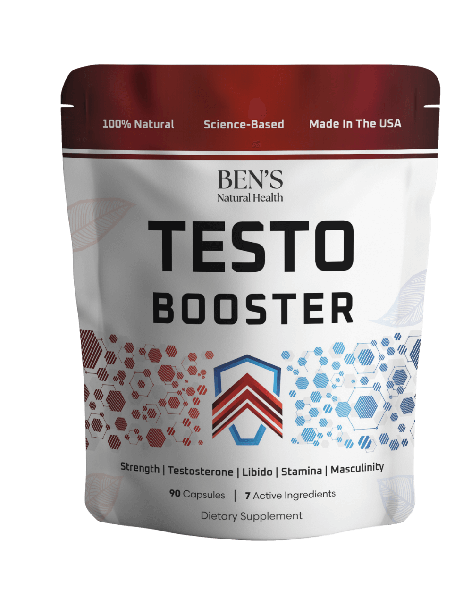Earl Grey tea is made from black tea leaves and the fruit of the Citrus bergamia tree.
The tea’s mildly citrusy flavor comes from spraying the leaves with bergamot extract or essential oil or combining them with dried bergamot rinds.
If you want to learn about Earl Grey tea’s nutritional ingredients, whether it contains caffeine, its health benefits, and how we can make it, continue reading to find out.
Benefits of Drinking Earl Grey Tea
In addition to its excellent flavor, Earl Grey tea has several remarkable health advantages:
1) Enhances Your Heart Health
Flavonoids found in Earl Grey tea can reduce blood pressure, cholesterol, and triglyceride levels and may lessen the risk factors associated with heart disease.
According to research, Earl Grey tea drinkers had a 40% reduction in triglyceride levels.
Furthermore, there was an 18% decrease in their blood sugar levels and a 17% decrease in their LDL cholesterol plasma ratio.
2) Encourages Weight Loss
Earl Grey tea contains polyphenols that increase fat metabolism and lessen oxidative stress. Also, it includes phytosomes that reduce belly fat when administered orally.
The anti-obesity benefits of bergamot phytosome supplementation on obese adults are investigated in research that includes 64 participants.
Thirty-three participants were given 500 mg of bergamot phytosome twice a day. Thirty-one participants in the other group received a placebo.
After only 30 days, individuals taking bergamot phytosome showed a substantial decrease in belly fat and LDL cholesterol.
Additionally, the citrus component increases metabolism, and coffee promotes fat burning and inhibits fat accumulation.
Lastly, when following a diet low in sugar and calories, Earl Grey tea is a fantastic replacement for sweetened beverages.
3) Improves Your Digestion
Polyphenols inhibit harmful bacteria and encourage good bacteria to thrive. Its antibacterial qualities assist in eliminating unwanted chemicals and restoring the intestinal tract’s lining.
Earl Grey tea’s bergamot oil may also help with inflammatory gastrointestinal problems. According to one research, bergamot juice may help reduce inflammation in the colon.
Another study indicates that bergamot juice combats the Helicobacter pylori bacterium, which is linked to stomach discomfort and ulcers.
In addition, consuming Earl Grey tea daily lowers your risk of contracting parasitic worms, which are widespread in tropical areas.
Get 10% Off Our Products!
- Sign up for our newsletter
- Get Your FREE Sleep Guide
- Be the first to hear about sales and promotions
- Stay up to date on our latest health news
4) Eases Anxiety and Stress
Anxiety, mood fluctuations, and tension may all be lessened with Earl Grey tea. Bergamot is often used as a sleep aid because of its relaxing and sedative properties.
Studies show it may drop blood pressure and calm the pulse rate, all of which help the body get ready for sleep.
5) Aids in Cancer Prevention
Antioxidants in Earl Grey tea fight free radicals, which have been linked to cancer development.
Free radicals harm healthy cells and induce them to transform into malignant cells.
Flavonoids included in Earl Grey tea are antioxidants that target free radicals in the body and lower the chance of developing cancers.
Regularly consuming Earl Grey tea gives your diet antioxidant components to help reduce your risk of cancer.
6) Encourages Dental Health
Earl Grey tea has a notable concentration of catechin, an antioxidant that helps manage and avoid oral infections.
Having a cup of Earl Grey tea after a sugar-filled treat helps lower dental cavities by decreasing the development of germs and avoiding plaque.
Fluoride, which keeps teeth from deteriorating, is also included in Earl Grey tea.
Lastly, this contributes to an additional line of defense against oral germs because of its anti-microbial qualities.
Just give your tea a little swirl before sipping for the best results.
7) Boost Your Immune System Power
Earl Grey Tea helps strengthen your body’s defenses against infections because it contains antioxidants.
8) Maintains Your Hydration
Adults should aim to consume eight glasses or two liters of water daily. Drinking Earl Grey tea is a tasty and nutritious way to improve your fluid intake since it is low in calories and sugar.
9) Beneficial to Your Skin
Free radicals can damage healthy skin cells and increase premature aging in the skin.
So, the antioxidants included in Earl Grey tea help protect your skin from damage and increase the regrowth of new skin cells, giving you younger-looking and cleaner skin.
Additionally, antioxidants promote quicker healing and lessen the visibility of scars. Thus, it helps those with skin allergies, psoriasis, eczema, and acne.
10) Increases Your Energy
Caffeine and L-theanine produce a steady energy boost, improving attention and energy.
Numerous studies have shown that drinking Earl Grey tea improved participants’ accuracy and attentiveness.

Does Earl Grey Tea Contain Caffeine?
Each eight-ounce Earl Grey tea has between 40 and 120 milligrams of caffeine. This is a reduction compared to coffee (average 95 milligrams of caffeine per 8 oz) and matcha (average 280 milligrams of caffeine per 8 oz).
Nutritional Ingredients In Earl Grey Tea
- Calories: Earl Grey tea usually has no calories, but this may vary depending on the additives added. Some people may add steamed milk and vanilla syrup, which can increase calories. ِAlso, there are usually no grams of protein, fat, carbohydrates, fiber, or sugar in a cup of Earl Grey.
- Micronutrients: Vitamins and minerals can be found in Earl Grey. This includes folic acid, aluminum, fluoride, potassium, magnesium, iron, and vitamins A, B1, B2, B6, and C.
- Antioxidants: Earl Grey tea contains plenty of antioxidants, such as flavonoids and polyphenols.
- L-theanine: Both black and green tea contain this fantastic amino acid. Research indicates that it may aid with stress, anxiety, and sleeplessness in addition to improving attention. It is also known to support blood pressure regulation and strengthen immunity.
Does Consuming Earl Grey Tea Have Any Adverse Effects?
For most individuals, Earl Grey tea is safe and offers health advantages. However, it has a caffeine content, which may lead to jitters, anxiety, and a quicker heartbeat if used in an extraordinary amount.
Additionally, there have been instances when people who drank a significant quantity of Earl Grey (1-2 L/ day) had muscular cramps, mostly because of the bergamot oil impeding the body’s ability to absorb potassium.
Moreover, tea includes tannins that may decrease your body’s ability to absorb iron.
However, if you are worried about your iron status and want to improve iron absorption from the diet, you can drink tea between meals.
Get Your FREE Eye Health Diet Plan
- Nine most important vitamins for eye health
- How to naturally protect and improve your eye health as you age
- Developed exclusively by our medical doctor
How to Make Your Own Earl Grey Tea At Home
To make homemade Earl Grey tea, simply steep a bergamot tea bag or loose tea leaves in hot water to make it.
One tablespoon (14 grams) of tea or one tea bag should be used for each cup (250 ml) of boiling water.
A bitter flavor emerges from steeping tea for longer than the recommended two to three minutes.
However, others prefer to steep the tea for up to five minutes to enjoy the full advantage of the citrus scent.
Also, multiple ingredients and flavors can be added to your tea, such as:
- Citrus Lady Grey and Cornflower Lady Grey: they are the most popular blends of Earl Grey tea with Seville oranges and cornflowers.
- London Fog: made by adding steamed milk and vanilla syrup to the Earl Grey tea.
- French Earl Grey: This is the Australian tea shop’s most popular mix, which contains extra rose petals.
- Russian Earl Grey: often includes citrus peels and lemon grass.
- Earl Grey Crème: made by adding vanilla, bergamot, and lavender to the Earl Grey tea.
- Earl Grey Green: made using green tea leaves instead of black tea.
- Earl Grey White, often known as “Earl White” tea: is a comparable kind that blends white tea leaves with bergamot flavoring.
- Rooibos Earl Grey: uses herbal tea from South Africa instead of black tea.
Conclusion
- Earl Grey tea is one of the most widely consumed types of tea worldwide. It is well-known for both its unique flavor and several health advantages.
- It’s an excellent substitute for coffee, mainly if caffeine causes palpitations and insomnia.
- Earl Grey tea is an excellent choice for anyone looking for a low-calorie beverage, and it has an abundance of antioxidants.
- So, take advantage of all that this tea has to offer!
Explore More









